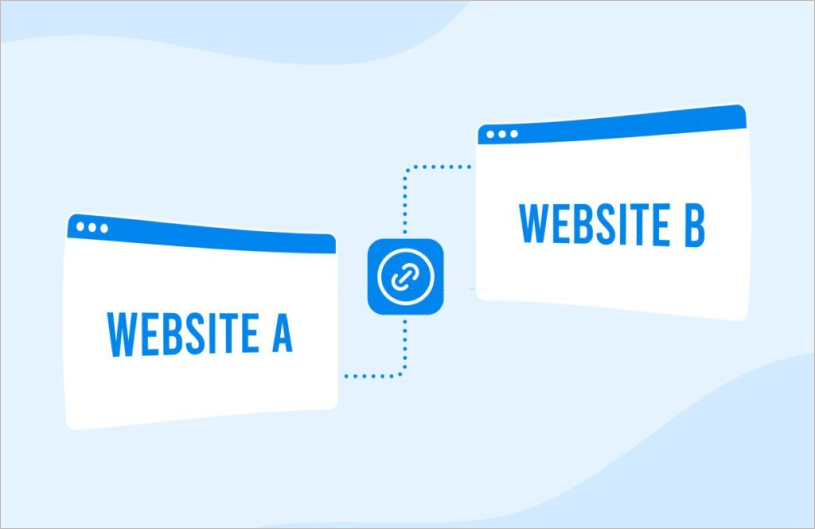Introduction:
Effective SEO makes your website shine by attracting visitors, increasing sales, and boosting earnings. While a sleek and attractive design holds its appeal, it can hinder how search engines assess, crawl, and rank your site.
A visually striking website is an innovative way to stand out. However, without a well-organized structure, your distinct online presence can swiftly transform into a perplexing maze for visitors and search engines.
In this blog, we’ll guide you through website structures and their crucial role in SEO. We’ll start by explaining what website structures are and why they matter. Following that, our team of experts from the Austin SEO Company will highlight how website structure significantly influences SEO outcomes.
What Is a Website Structure?
Website structure is basically how your site is organized. It’s like arranging things neatly so visitors can easily find what they want. A poorly structured website can make people frustrated. Visitors might leave if it’s hard to navigate or needs to work better on different devices.
Creating a good website structure involves:
- Making sure your pages connect logically.
- Providing clear paths to go back or move around.
- Using helpful elements like breadcrumbs and easy-to-use menus.
It’s not just tech-talk – website structure is about making your site user-friendly and keeping visitors happy.
Why Is Your Website Structure So Important?
The way your website is put together matters for three big reasons.
First, a clear and well-organized structure makes things easy for people visiting your site. It means they can move around without trouble and find what they want. This smooth experience keeps them engaged on your site for longer periods, potentially leading to more actions like making purchases or filling out sign-up forms.
Then, there’s something important called Search Engine Optimization (SEO). When your website is neatly arranged, search engines like Google understand it better. They can explore all parts of your site and adequately list your content. This organization helps your website show up when people search. On the other hand, a messy site structure can cause your pages to compete against each other in search rankings.
A popular type of site structure webmasters recommend is hierarchical, resembling a pyramid. The top is the homepage, followed by categories and individual pages. This structure empowers you to signal to search engines which pages hold the most importance, aiding those pages in ranking higher.
Lastly, a smart structure stops “keyword cannibalization.” Keyword cannibalization happens when similar stuff gets mixed up. With a clear structure, each thing stands out and has its place. That helps both people and search engines know what each item is about. The outcome? Smooth navigation and the ability to establish connections across different pages, resulting in higher ranking.
Remember, if your website’s structure doesn’t make sense to search engines and people, your SEO, content, and design efforts might not yield good results.
Is your website’s structure hindering your SEO success?
Let YellowFin Digital’s Austin SEO services assist you.
How Website Structure Impacts SEO?

Some key things must be remembered regarding website structure and its effect on SEO.
Here are the essentials you should consider:
Site Crawlability
One of the most crucial factors in website structure is ensuring that search engines can crawl your site easily. This crucial factor is known as “crawlability.” Search engines use crawling to understand what your website is all about by going through your content.
For a page to be easily “crawlable,” it needs to connect with other parts of your site. When Google bots land on a page, they begin looking for links that direct them to other pages on your site. These links help them explore your website effectively.
Here’s the key: Avoid creating “dead ends” that halt search engines in their tracks. To assist them in moving smoothly, include links within your pages that connect various sections of your site. Elements like breadcrumbs, schema, and structured data also contribute to clarity. Additionally, monitoring your Google crawl budget is essential – think of it as the energy that fuels search engines during their exploration.
URL Structure
URLs function as the digital addresses of your web pages. They play a significant role in how your site is set up and help people, and search engines find their way around.
The best URLs are concise and user-friendly, enabling human visitors and search engine crawlers to comprehend the page’s content. These URLs often incorporate essential keywords that offer valuable context. Creating a good URL structure is like organizing things systematically across your site.
Additionally, submitting an XML sitemap to search engines highlights your most significant URLs, aiding their understanding. Remember to keep things simple. Don’t overcomplicate URLs with too many technical details.
HTTP/HTTPS
Let’s now talk about HTTP and HTTPS – these are like the addresses your website uses. You might have seen them in the web browser. HTTPS is like a secured version of HTTP, and it’s essential for several reasons.
First, HTTPS makes your website more secure. It’s like having a lock on your digital door. HTTPS is becoming even more critical as Google likes secure websites and might even boost your website’s position in search results if it’s secure.
That’s why over 50% of websites worldwide have already started using HTTPS.
Moving to HTTPS has other advantages too:
- Better User Experience: Your visitors feel safer on your site, which leads to a better experience.
- Protects User Information: HTTPS shields the info your users share on your site, like passwords or credit card details.
- Enables AMP: If you want to use a special web page called AMP, you need HTTPS.
- Boosts PPC Ads: HTTPS can help your ads work better if you run ads.
- Improves Google Analytics Data: Your data in Google Analytics becomes more accurate.
Enhancing SEO with Internal Linking

Proper navigation means users smoothly move from one web page to another. But, if your site has many pages, getting to them through the navigation menu can be tricky. Ideally, finding any page should take just three clicks, even though it’s not a strict rule. Still, making pages reachable with fewer clicks improves the user experience.
Internal linking is vital for users and search engines to find pages. Think of it as building pathways within your website, just like roads in a city. These pathways help users and search engines explore content quickly.
Pages without these paths make it harder for search engines to explore. Internal links are essential because they guide search engines through your site. Similar to how roads keep a city organized, well-structured internal links maintain your website’s order.
A Tip: You can use important words in your content to link to other relevant information on your site. It’s like pointing out related things your visitors might want to know.
Using internal links for SEO brings many benefits
- Internal links help search engines find other pages using important words.
- They decrease how deep pages are buried in your site.
- Internal links give users an easier way to find additional content, improving their experience.
- Search engines value internal links for better rankings on search results pages.
Often, people link back to older content using internal links.
But here’s a thought: People rarely do the reverse – go back to older content and link to newer ones. Make sure to connect both by using internal links. It’s like closing a loop for better website structure and SEO.
Quality Content and Keywords
Quality content blended with keywords is the foundation of your SEO strategy and plays a significant role in designing and organizing your website right from the beginning. Focusing on these aspects means understanding your audience, how they search, and what competitive topics are. And you weave all of this into how your website is set up and looks.
The best websites make sure they give both users and search engines a great experience. They do this by placing their most important content at the core of their website’s structure.
Also, remember to clean up your website by removing old stuff. Removing old content keeps both search engines and visitors interested. And if you take down a page, remember to redirect the URLs of removed pages to prevent users from encountering dead-ends, thereby reducing the likelihood of them leaving your site prematurely.
Navigation and User Experience
Modern websites have to be super user-friendly. Unlike in the early days of the internet, people now expect websites to work well and look professional. If someone finds a poorly made website, they’ll quickly leave and probably won’t return.
The internet isn’t new anymore, and nobody wants to waste time figuring out how to use a website. Visitors who can’t find what they wish quickly will move on to a competitor’s website. Remember, a bad user experience can harm your SEO.
Google generally pays attention to how people use a website. They use this info to improve future search results. If many people leave your site quickly, Google might not show it in search results as much.
Research shows that when people have a good experience on a website, it tells Google that the search results are correct. But if they have a bad experience, Google might think the page isn’t relevant and could change the search results accordingly.
User Experience with Core Web Vitals
Core Web Vitals is a significant aspect of Google’s page experience update. As you improve your website’s image quality, these Core Web Vitals can impact your website’s ranking.
Google is giving more importance to factors like Cumulative Layout Shift (CLS) and the speed at which visual and textual content load. These factors have become crucial in determining website rankings.
As a result, website developers, designers, and SEO experts at our Austin SEO agency are closely collaborating to meet these benchmarks and stay ahead of the curve.
Mobile Friendly
Creating a user-friendly experience for mobile visitors is vital to designing and developing a website.
The work needed to make a website mobile-friendly can differ depending on your technical know-how, the developers you have, and your business strategy.
Complex websites, especially those with online stores, can be tricky to optimize for mobile devices if you don’t plan during the initial stages of site development. Optimizing is even more challenging if your website uses old tools like Adobe Flash, which is not supported on mobile platforms.
Speed & Performance
If your website’s construction and structure don’t support a fast user experience, your SEO efforts and overall results will take a hit.
When your site loads slowly or doesn’t respond quickly, it undermines the efforts of developers, content creators, and SEO professionals. Even a one-second delay in how fast page loads can lead to fewer page views, reduced traffic, and a significant decrease in conversions. These delays, in turn, create a frustrating user experience.
To avoid this, collaborate closely with the IT team and designers to ensure your website functions well on mobile and desktop devices. Regularly checking your website’s responsiveness and addressing any issues promptly can prevent a costly disaster.
Tips for Designing and Developing Your Website Structure

Optimize Your Site For People, Not Bots: Always remember that your goal is to keep visitors engaged and boost conversions. Focus on creating content that resonates with readers and provides them with valuable information rather than just catering to search engine algorithms. This content means crafting content that answers their questions, solves their problems, or entertains them.
Reasonable Links on Pages: Balancing content and links is key. You want users to enjoy what they’re reading and also explore your site more.
To do this:
- Don’t overload pages with too many links.
- Aim for about three to five links per 1,000 words.
- Make sure each link fits the topic.
This way, users stay engaged and aren’t overwhelmed.
Utilize Heading Hierarchy: How your website is organized matters, and the structure of each page is important too.
When you implement a heading hierarchy, you create a logical format that makes sense to both people and search engines. This hierarchy organizes your content using heading levels H1, H2, H3, and H4. These headings are easy to use and enhance the readability of each page.
You can even experiment with different heading styles to see how they impact user engagement with your pages.
Show Breadcrumbs: Navigation is a key aspect of user experience. It’s essential to enable easy forward and backward movement on your website. And that’s where using breadcrumbs comes in handy. But, surprisingly, many websites overlook using breadcrumbs on their product pages, confusing users about their location on the site and how to backtrack.
Breadcrumbs simplify things by allowing users to quickly navigate back to broader category pages or even the homepage with just a few clicks.
Keep up on Keyword Research: If there’s one thing equally important as the website structure, it’s content. To create content that connects with your audience, conduct keyword research at every stage of development to ensure all pages are well-optimized.
Selecting the appropriate keywords with search volume is vital for generating traffic. Leverage keyword tools for deeper insights, enhancing traffic, and exploring backlink opportunities.
Include Schema Markup: Take your website’s structure to the next level by adding structured data. Structured data includes tags, JSON code, and rich information that search engines understand. Google has recommended using structured data since 2014, which has dramatically improved website visibility for some sites. For the best results, start with schema markup.
Enhance Your Website Structure for Higher Rankings with Austin SEO Company
Enhancing your website structure is key to achieving higher search rankings and delivering an elevated user experience. If your site needs improvement in this area, consider contacting YellowFin Digital, the best SEO Company in Austin.
With a team of experienced experts, YellowFin Digital specializes in optimizing website structures, improving SEO strategies, and enhancing overall online visibility.
Reach out to us today for a successful online presence tomorrow!



